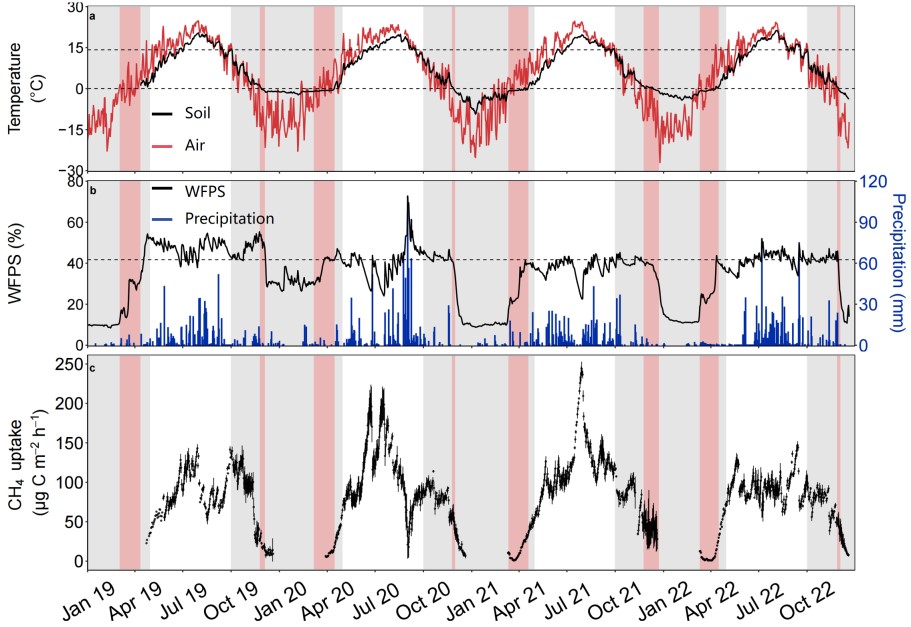2025-05-21 中国科学院 (CAS)

Seasonal variations in atmospheric and soil temperature, soil moisture and daily precipitation, and soil methane uptake (Image by LIU Yuqi)
<関連情報>
- https://english.cas.cn/newsroom/research_news/earth/202505/t20250521_1044199.shtml
- https://www.sciencedirect.com/science/article/abs/pii/S0168192325001947?via%3Dihub
温帯林土壌における正味のメタン吸収は温度と水分の両方で制御される Temperature and moisture both control net methane uptake in a temperate forest soil
Yuqi Liu, Jesper Riis Christiansen, Kai Huang, Dongwei Liu, Yihang Duan, Gang Liu, Geshere Abdisa Gurmesa, Xiaoming Fang, Shushi Peng, Yunting Fang
Agricultural and Forest Meteorology Available online: 5 May 2025
DOI:https://doi.org/10.1016/j.agrformet.2025.110574
Highlights
- >70,000 in-situ CH4 flux data and over 4 years of continuous observation.
- Soil temperature and moisture explained 36 % and 56 % of the variance in CH4 uptake.
- The primary controlling factors of CH4 uptake vary across different seasons.
- A Temp-WFPS model can explain 86 % of the seasonal CH4 uptake variance.
Abstract
The role of well-aerated forest soils as sinks for atmospheric methane (CH4) and their impact on mitigating climate warming have gained attention recently. However, there is a lack of continuous time series data on net soil CH4 flux in these forest soils, making annual budget estimates uncertain. In this study, we investigated the spatiotemporal variations and driving factors of soil CH4 uptake in a temperate forest ecosystem over 4 years using continuous automatic in-situ chamber measurements. Our results showed that the soil consistently acted as a CH4 sink, averaging 5.24 kg CH4-C ha−1 yr−1, with a peak uptake rate of 243.98 µg C m−2 h−1 in summer and minimum uptake rates of 0.82 µg C m−2 h−1 in winter. Soil CH4 uptake was mainly influenced by soil temperature and moisture, with methanotroph abundance and soil organic carbon content also playing roles. A simple linear regression model indicated that soil temperature and moisture explained 36 % and 56 % of the variance in CH4 uptake, respectively. Moreover, the Temp-WFPS model and diffusion-reaction equation model explained 86 % and 53 % of the annual CH4 uptake variance, respectively. Through the provision of comprehensive measurements detailing daily, seasonal, and annual CH4 uptake, along with their environmental determinants, our data aids in the advancement of more precise biogeochemical models, thereby enhancing the estimation of global CH4 budgets.



